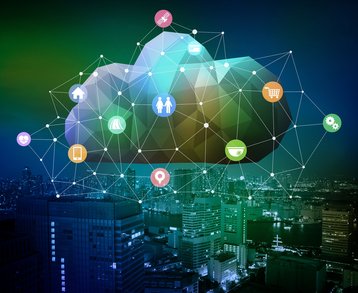The impact of Covid-19 is proving a monumental turning point for private and public sector organizations everywhere. Spurred to respond at speed to government-imposed lockdowns, businesses scrambled to deploy remote working models in a bid to maintain customer-facing services while keeping employees safe.
With UK lockdown restrictions now easing, organizations are re-evaluating their work-from-home strategies in light of learnings gleaned from having to initiate digital options for remote workers at scale.
For many, the priorities going forward are clear. In an uncertain world where health crises and other disruptive events represent how we work today, a rethink of IT systems to ensure the distributed workforce can work securely and effectively – and that critical enterprise systems remain both protected and highly available – is important.
Addressing cybersecurity challenges
Cybercriminals were quick to take advantage of the recent pandemic and businesses, governments, research establishments, healthcare agencies and schools experienced a rapid uptick in ransomware attacks. According to Reuters, ransomware attacks jumped by 148 percent in March as online threat actors targeted vulnerable remote users.
As many organizations discovered to their cost, utilizing traditional VPN connections to enable remote workers opened up enterprise networks to cyber-attacks that entered through employee home networks. To eliminate this risk, IT leaders will need to deploy active protection tools across the entire extended network and initiate advanced built-in back-up, disaster recovery and cloud storage to enable fast and granular object-level recovery in the event of an attack. But cybersecurity issues were not the only challenge that confronted IT managers tasked with deploying remote working models at speed.
Making work from home work quickly for users
Many businesses struggled to equip their home workers with the kit needed to work remotely. With devices suddenly in short supply on the open market, they were faced with having to ask employees to use their own personal devices. This meant that enterprise infrastructures had to be configured at speed to enable VPN access for users – a mammoth task for already overstretched IT teams and a complex approach that required near-constant support for users as they struggled to connect with enterprise systems.
However, those organizations that had previously deployed a virtual desktop infrastructure (VDI) solution were able to quickly initiate virtual workspaces at scale – serving these up to workers anywhere, and on any device. This made it possible to extend the remote capabilities of the workforce in a predictable and easy to manage way, without compromising enterprise security.
The recent emergence of edge computing in combination with hyperconverged infrastructure (HCI) has made VDI a highly practical option for IT teams that need to be confident they can enable a large number of users to work remotely at the drop of a hat. As many organizations discovered, these solutions make it possible to set up a remote user in under an hour.
HCI and edge: simplifying service provisioning
Rolling out an HCI and edge powered VDI solution enables IT teams to quickly add new nodes as the remote workforce swells, rolling these back again once demand drops. Designed to be managed from a central interface, IT staff can manage and scale everything – compute, storage, networking – as required from a central console. Alongside making it easy to manage backups for each individual user, the addition of edge computing systems to VDI solutions also gives IT teams powerful automated disaster recovery capabilities such as replication, file-level recovery, and snapshot scheduling that is part and parcel of a robust business resilience strategy.
Finally, edge computing eliminates the latency and bottleneck performance issues previously associated with VDI technologies. This made it easier for IT teams to maintain and manage growing desktop workloads while assuring the outstanding desktop experience that users expect.
Delivering enhanced security at the edge
Today’s modern VDI solutions also simplify how IT teams are able to maintain the security stance of the extended enterprise. Using multifactor authentication to give users access to their email, files and applications, IT teams can remotely monitor user profiles, log users out and receive automated alerts on potentially suspicious activities. Plus, sensitive data always stays within the corporate network as it is never exposed to employees’ private networks through a VPN connection.
Similarly, these solutions make BYOD strategies that eliminate any need to deploy IT to home-based employees a risk-free option. Users can securely connect to their personalized desktop using any device they choose.
Rethinking the future of business resilience
Maintaining business resilience entails a wide range of considerations that need to be addressed if employees and assets are to be protected should disaster strike. Many organizations are now re-evaluating their business resilience systems and plans in the light of recent experiences to ensure they are appropriately prepared for a rapidly evolving threat landscape. That now includes ensuring that the workforce can be quickly and effectively mobilized to work remotely and putting in place platforms that ensure remote working models can be executed and maintained with ease for the foreseeable future.


